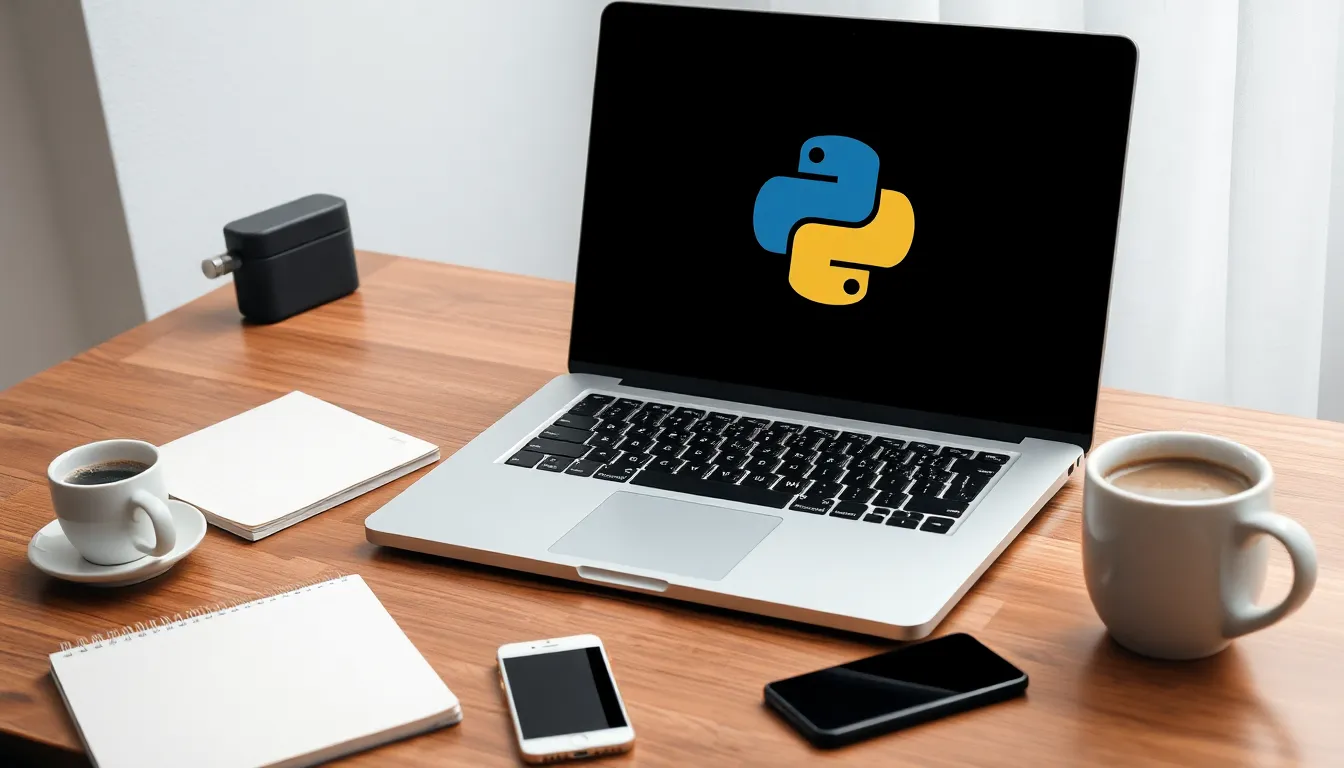If you’ve ever found yourself tangled in the web of Python installations, you’re not alone. Installing bvostfus Python can feel like trying to assemble IKEA furniture without instructions—frustrating and potentially hazardous to your sanity! But fear not, because this guide is here to turn that installation headache into a smooth sailing experience.
Install BVOSTFUS Python
BVOSTFUS offers a powerful technology for Python users that simplifies various programming tasks. This section explores its definition and benefits.
What is BVOSTFUS?
BVOSTFUS represents an innovative framework designed for enhancing Python development. By providing a collection of tools, it improves code efficiency and streamlines workflows. Developers can leverage BVOSTFUS to simplify complex tasks, making programming more intuitive. This technology integrates seamlessly with existing Python libraries, enhancing functionality without steep learning curves. Its versatility appeals to various use cases, from data analysis to web development.
Why Use BVOSTFUS with Python?
Using BVOSTFUS with Python enhances productivity significantly. It supports rapid development through built-in functionalities that automate repetitive tasks. Developers benefit from reduced coding time, allowing them to focus on problem-solving. Moreover, BVOSTFUS integrates well with popular frameworks, facilitating easier collaboration among team members. Adoption of this technology can lead to improved code quality and maintainability. Organizations that utilize BVOSTFUS often see a marked improvement in project outcomes due to its efficiency.
Prerequisites for Installation

Before installing BVOSTFUS for Python, ensure the system meets the necessary requirements and libraries. This ensures a smooth installation process.
System Requirements
Operating systems should include Windows 10 or later, macOS Sierra or later, or any Linux distribution supporting Python 3.6 or newer. Additionally, at least 4 GB of RAM is recommended to support BVOSTFUS functionalities efficiently. Disk space requirements vary, but allocating a minimum of 1 GB for installation is advisable. A reliable internet connection enhances access to updates and necessary packages. Python must be installed, specifically version 3.6 or later, as BVOSTFUS integrates with it directly.
Necessary Libraries and Tools
Several libraries are needed for optimal performance of BVOSTFUS. NumPy serves as the foundation for numerical computations. Pandas facilitates data handling and analysis. Matplotlib supports data visualization operations. Installation of pip is essential for managing package installations conveniently. Additionally, setting up a virtual environment is useful for isolating projects and dependencies. Familiarity with Git can streamline version control throughout the development process.
Step-by-Step Guide to Install BVOSTFUS Python
Follow these steps to install BVOSTFUS Python effectively.
Installing Python
Start with downloading Python from the official website. Choose the version compatible with your operating system, ensuring it supports Python 3.6 or newer. Run the installer and check the box that adds Python to your system’s PATH. Once the installation completes, confirm the installation by opening a command prompt or terminal. Enter python --version to verify the installed version matches your selection. Completing this step sets a solid foundation for the next parts of the process.
Using pip to Install BVOSTFUS
Next, ensure pip is installed, a package manager for Python. If Python installation included pip, it won’t require additional steps. Otherwise, download the get-pip.py script from the official pip website. Execute it by running python get-pip.py in your command prompt or terminal. After installing pip, BVOSTFUS can be installed using the command pip install bvostfus. This command fetches the latest version directly from the Python Package Index, simplifying the installation.
Verifying the Installation
Final verification of the BVOSTFUS installation is essential. Launch a command prompt or terminal and type pip show bvostfus. This command displays information about the BVOSTFUS package, confirming its installation. If details such as version number and location appear, the installation completed successfully. Testing BVOSTFUS functionality can begin by running a sample script or checking the documentation for initial development tasks.
Common Installation Issues
Installing BVOSTFUS can present various challenges. Users encounter common errors and dependency issues during the installation process.
Troubleshooting Errors
Errors frequently arise from incorrect Python installation. Missing dependencies also contribute to issues. A common mistake involves overlooking the need to run the installer with administrative privileges. Following error messages closely helps identify problems. Suppose an error message states that a package is missing; this often indicates that required libraries are not installed. Reviewing logs or console outputs provides valuable clues. Reinstalling Python or related packages resolves many issues. Ensuring the latest version of pip can avoid compatibility errors.
Checking Dependencies
Dependencies play a crucial role in the successful installation of BVOSTFUS. Libraries such as NumPy, Pandas, and Matplotlib are essential. Users must verify that these packages are up to date before installation. Running the command pip list allows one to check installed packages and their versions. If a dependency appears outdated or missing, users should update it with pip install --upgrade [library_name]. Such maintenance ensures optimal performance of BVOSTFUS. Consulting the official documentation provides specific requirements for each dependency.
Ensuring System Compatibility
Installing BVOSTFUS Python can transform the development experience by simplifying workflows and enhancing productivity. By following the outlined steps and ensuring system compatibility, users can avoid common pitfalls and set up their environment efficiently. The integration of essential libraries and tools not only streamlines coding but also promotes better project outcomes.
It’s crucial to remain vigilant about system requirements and keep dependencies updated for optimal performance. With the right preparation and guidance, users will find that BVOSTFUS significantly improves their programming journey, making it a valuable addition to their development toolkit. Embracing this framework opens the door to a more intuitive and productive coding experience.
